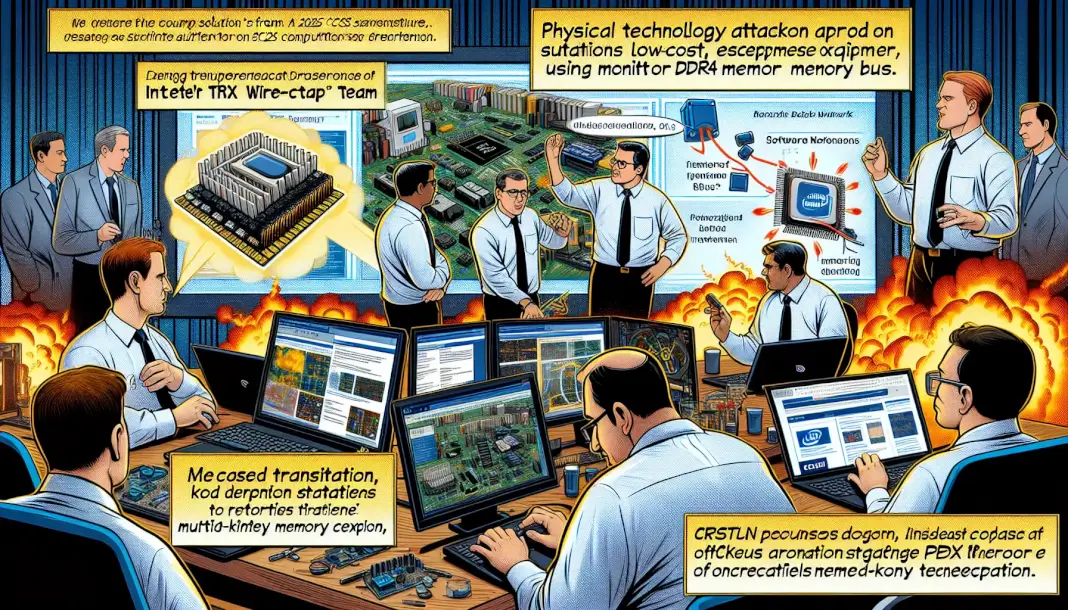KEY TAKEAWAYS
- Researchers demonstrated a low-cost attack on Intel’s SGX, extracting attestation keys using equipment under $1,000.
- The attack exploits unencrypted DRAM bus access, affecting blockchain projects like Secret Network and Crust Network.
- Crust Network plans to transition from SGX to Intel’s TDX, enhancing security with machine-level isolation and multi-key encryption.
At the 2025 ACM CCS conference, a research team known as theWireTapteam demonstrated a low-cost physical attack targeting Intel’s Software Guard Extensions (SGX). Using equipment costing less than $1,000, the team was able to monitor the DDR4 memory bus and extract SGX attestation keys. This allowed them to forge trusted remote attestation proofs.
The attack exploits the lack of encryption protection on the DRAM bus, enabling direct access to encrypted materials. Once the key is extracted, attackers can impersonate legitimate enclaves, compromising their confidentiality and integrity guarantees. The research validated the feasibility of this attack across multiple blockchain projects, including Secret Network, Phala Network, and Crust Network.
Crust Network’s Response to the Vulnerability
The Crust Network team has been closely monitoring the report and provided clarifications to the community. They emphasized that the disclosed attack method requires physical access to specific server hardware running SGX, representing a high-threshold attack vector.
Since its inception, Crust Network has considered the potential evolution and risks of Trusted Execution Environment (TEE) technology in its long-term technical vision. The team is working to transition from SGX to Intel’s Trust Domain Extensions (TDX). This shift will migrate sensitive modules into trusted domains based on TDX, replacing process-level enclaves with machine-level isolation.
By integrating remote attestation, key rotation strategies, and multi-key memory encryption, Crust aims to enhance data protection without modifying upper-layer services. The network maintains a multi-TEE compatibility and layered defense architecture to minimize the impact of any single TEE compromise.
Crust Network announced these measures here, reinforcing its commitment to security and the sustainability of decentralized storage services.
Why This Matters: Impact, Industry Trends & Expert Insights
At the ACM CCS 2025 conference, a research team demonstrated a low-cost physical attack on Intel’s SGX, affecting blockchain projects relying on SGX for secure operations.
A recent SecurityWeek report highlights the critical impact of the WireTap attack on Intel SGX security. This aligns with the news as it exposes vulnerabilities in blockchain projects like Crust Network, leading to strategic shifts toward alternative confidential computing technologies.
As per insights from TechNewsWorld, experts view Intel SGX as fundamentally compromised, posing ongoing risks to secure enclave-based applications. This supports the significance of the ACM CCS 2025 findings, reinforcing the need for blockchain projects to reassess their security frameworks.
Explore More News:
Disclaimer: The views expressed in this article are those of the authors and do not necessarily reflect the official policy of CoinsHolder. Content, including that generated with the help of AI, is for informational purposes only and is not intended as legal, financial, or professional advice. Readers should do their research before taking any actions related to the company and carry full responsibility for their decisions.

